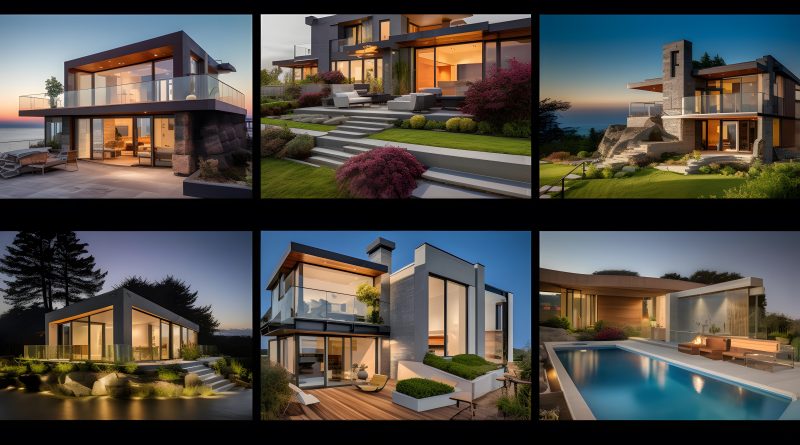Inside Novak Djokovic’s Luxurious Global Real Estate Portfolio
Novak Djokovic, one of the greatest tennis players of all time, is not just a champion on the court. Off the court, he has cultivated a diverse and impressive real estate portfolio, spanning across some of the world’s most prestigious locations. From luxurious penthouses in Monte Carlo to chic condos in Miami, Djokovic’s property investments offer a fascinating glimpse into his strategic approach to real estate. His collection of properties reflects a blend of lifestyle choices and financial prudence, mirroring trends seen across the celebrity and high-net-worth sectors.
Djokovic’s Real Estate Portfolio: An Overview
Novak Djokovic’s real estate portfolio is as diverse as his tennis game, with properties in some of the most desirable locations worldwide. His primary residence is a luxurious penthouse in Monte Carlo, Monaco, a city synonymous with wealth and exclusivity. This location offers Djokovic proximity to top-tier training facilities and a central base in Europe, where many major tennis tournaments are held. The Monte Carlo apartment is noted for its sweeping views of the Mediterranean Sea, world-class amenities, and privacy—a crucial factor for a global sports icon.
Beyond Monte Carlo, Djokovic owns a high-end condo in Miami, Florida. Situated in one of the city’s most prestigious buildings, this property offers expansive ocean views and close proximity to the Miami Open, one of Djokovic’s key tournaments. Miami’s vibrant culture, favorable tax policies, and booming real estate market make it a prime location for investors like Djokovic looking to blend leisure with solid investment opportunities.
Additionally, Djokovic holds property in Marbella, Spain, where he often trains during the off-season. The property is described as a family-friendly estate that balances luxury and comfort, nestled in one of Spain’s most affluent regions. His interest in Marbella is reflective of a growing trend among celebrities and high-net-worth individuals seeking residences in locations that offer both privacy and a relaxed lifestyle.
Djokovic also owns an apartment in New York’s Soho neighborhood, one of Manhattan’s trendiest areas. Known for its cultural vibe and high-end boutiques, Soho offers Djokovic a metropolitan experience, coupled with the opportunity to participate in events like the U.S. Open with minimal hassle.
The Celebrity Influence on Luxury Real Estate Markets
Celebrities like Novak Djokovic play a significant role in shaping luxury real estate markets worldwide. Their investment choices can create ripple effects in local markets, driving up property values and attracting a wave of affluent buyers. Djokovic’s acquisitions in Monte Carlo, Miami, and Marbella, for example, have all contributed to increased interest in these areas from potential buyers seeking to emulate a celebrity lifestyle.
Djokovic’s property purchases align with a broader trend among celebrities who are increasingly choosing properties that are not just luxurious but also strategically located. For instance, Monte Carlo offers a combination of Mediterranean charm, world-class amenities, and a status symbol that few other locations can match. Meanwhile, Miami’s appeal goes beyond its beaches; it has become a major hub for international investors, partly due to high-profile celebrity investments that have put the city on the global luxury map.
Similar trends have been observed in other markets. When celebrities invest in particular areas, they often draw media attention and increase the desirability of these locations among wealthy buyers. This dynamic is evident in places like Los Angeles, the Hamptons, and London, where high-profile transactions have led to local real estate booms.
Djokovic’s Real Estate Strategy: A Blend of Lifestyle and Investment
Djokovic’s real estate strategy appears to balance personal lifestyle preferences with sound investment principles. His choice of properties suggests a careful consideration of several key factors: proximity to major tournaments, luxury and comfort for his family, and long-term appreciation potential. Each property in his portfolio serves a dual purpose—offering both a luxurious residence and a promising investment.
For instance, his Monte Carlo penthouse allows Djokovic easy access to several European tournaments, while the New York apartment provides a foothold in the U.S. market, particularly close to the U.S. Open. The Marbella property, with its spacious grounds and family-oriented design, serves as a retreat that complements his lifestyle needs during the off-season.
Djokovic’s properties also reflect a preference for high-end developments with unique amenities, such as private pools, gyms, and concierge services. These features not only provide comfort and convenience but also ensure the properties maintain or increase their value over time. Additionally, his choice of locations—cities with strong real estate markets and potential for growth—indicates a strategy focused on capital appreciation and rental income, common among high-net-worth investors.
Djokovic’s real estate portfolio is a microcosm of broader trends in the luxury market. There is a clear shift towards properties that offer sustainability, cutting-edge technology, and unique amenities. High-net-worth individuals are increasingly seeking out homes that not only provide luxury but also reflect their values, such as eco-friendliness and community engagement.
Djokovic’s property in Marbella, for instance, is located in a region known for its green initiatives and sustainable development. Similarly, the choice of properties with smart home technologies and state-of-the-art security systems aligns with the growing demand for tech-enabled luxury homes.
Another trend evident in Djokovic’s choices is the preference for locations that offer both privacy and access to vibrant cultural or social scenes. This duality is seen in his selections from Monte Carlo to New York, reflecting a desire for both exclusivity and connectivity—a balance many celebrities seek.
Sources:
